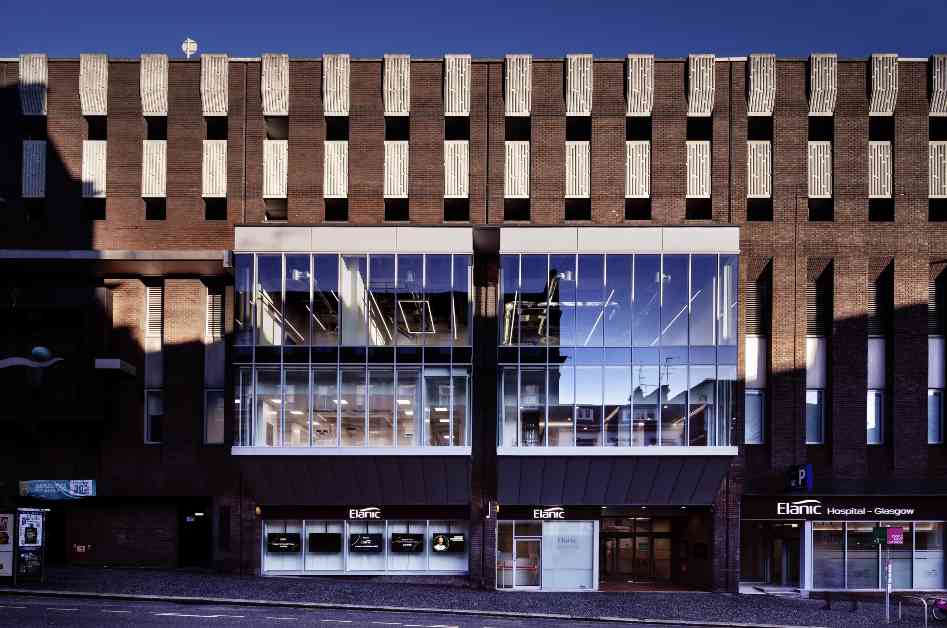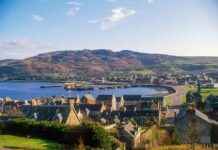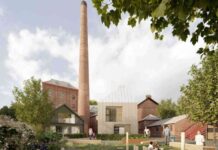A cutting-edge private hospital facility has recently opened its doors in the heart of Glasgow city centre, marking a significant milestone in the revitalization of a prominent Brutalist building. Designed by private healthcare architects NVDC, this flagship £4 million project, known as the Elanic Hospital, promises to be a center of excellence for general healthcare services, with a focus on specialized surgeries including orthopaedics, gynaecology, weight loss, and cosmetic procedures.
NVDC, under the leadership of architect Farahbod Nakhaie, transformed the former Royal Bank of Scotland branch on Bath Street into a state-of-the-art three-storey hospital for Dr. Vivek Sivarajan, the Medical Director of Elanic. The vision behind this project was to create a fully compliant day surgery and hospital facility with two GA theatres, recovery rooms, day beds/bedrooms, and essential support functions like reception areas and admission/discharge lounges. Additionally, a spacious open plan office space was integrated into the design to accommodate marketing and administration staff, breathing new life into the building’s original banking hall.
Farahbod Nakhaie, the founder of NVDC, emphasized the importance of repurposing existing structures as a sustainable practice, particularly in preserving architectural heritage like the 1980s Brutalist building. He highlighted the role of such initiatives in revitalizing city centers, especially in the face of declining retail spaces, by fostering community engagement, economic growth, and job creation. The Elanic Hospital, with its capacity to serve up to 60 patients weekly and employing approximately 100 staff members, stands as a testament to the power of adaptive reuse in driving urban renewal and fostering a vibrant city atmosphere.
Preserving Architectural Heritage
In a city like Glasgow, known for its rich architectural legacy, the transformation of a Brutalist landmark into a cutting-edge healthcare facility represents a harmonious blend of past and present. The decision to repurpose the former bank building not only pays homage to its architectural significance but also underscores the commitment to sustainable development and responsible urban planning. By breathing new life into a structure that might have otherwise faced neglect, NVDC and Elanic Hospital have set a remarkable example of adaptive reuse, showcasing the potential for historical buildings to serve contemporary needs while preserving the essence of the city’s built heritage.
Community Impact and Economic Growth
Beyond its architectural merits, the Elanic Hospital holds immense potential to catalyze positive change within the community and contribute to the economic vitality of Glasgow’s city center. By creating a hub of healthcare excellence and generating employment opportunities for local residents, this new facility embodies the transformative power of adaptive reuse in urban regeneration. The infusion of activity and vibrancy into a previously underutilized space not only enhances the appeal of the city center but also fosters a sense of community well-being and pride. As a beacon of progress and innovation, the Elanic Hospital sets a precedent for sustainable development practices that prioritize both heritage preservation and economic prosperity.
In conclusion, the opening of the Elanic Hospital in a revived Brutalist building stands as a testament to the ingenuity and foresight of its architects and stakeholders. By repurposing a significant architectural landmark and transforming it into a modern healthcare facility, NVDC and Elanic Hospital have demonstrated a commitment to sustainability, community engagement, and urban revitalization. As this state-of-the-art facility begins its journey of serving patients and contributing to the city’s economic growth, it symbolizes the enduring value of preserving the past while embracing the future.
































